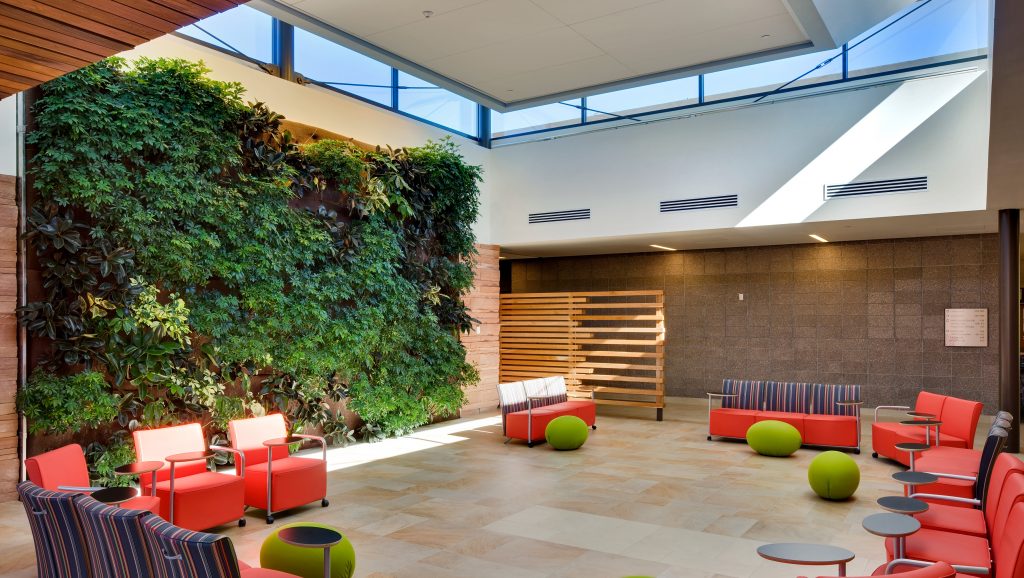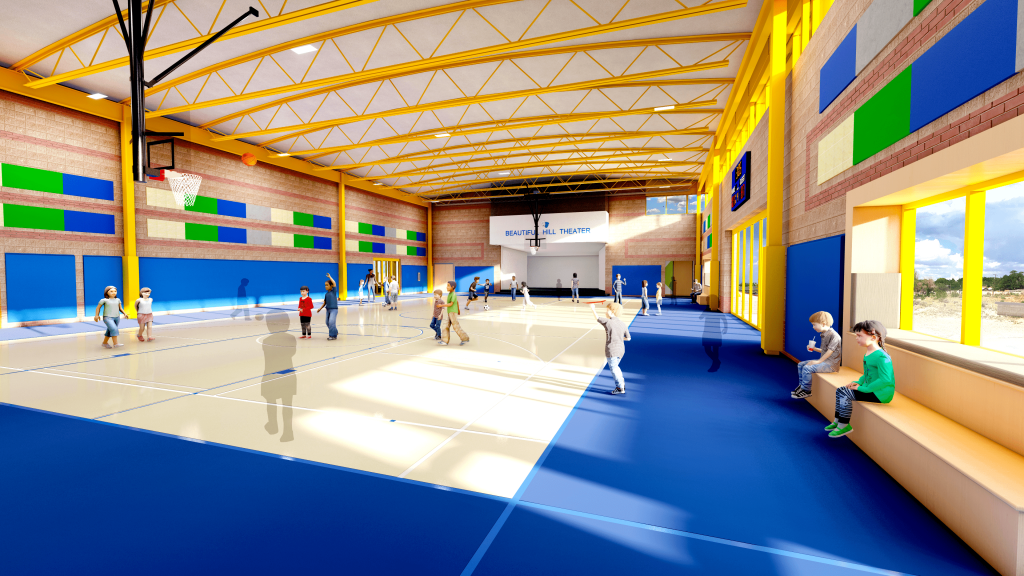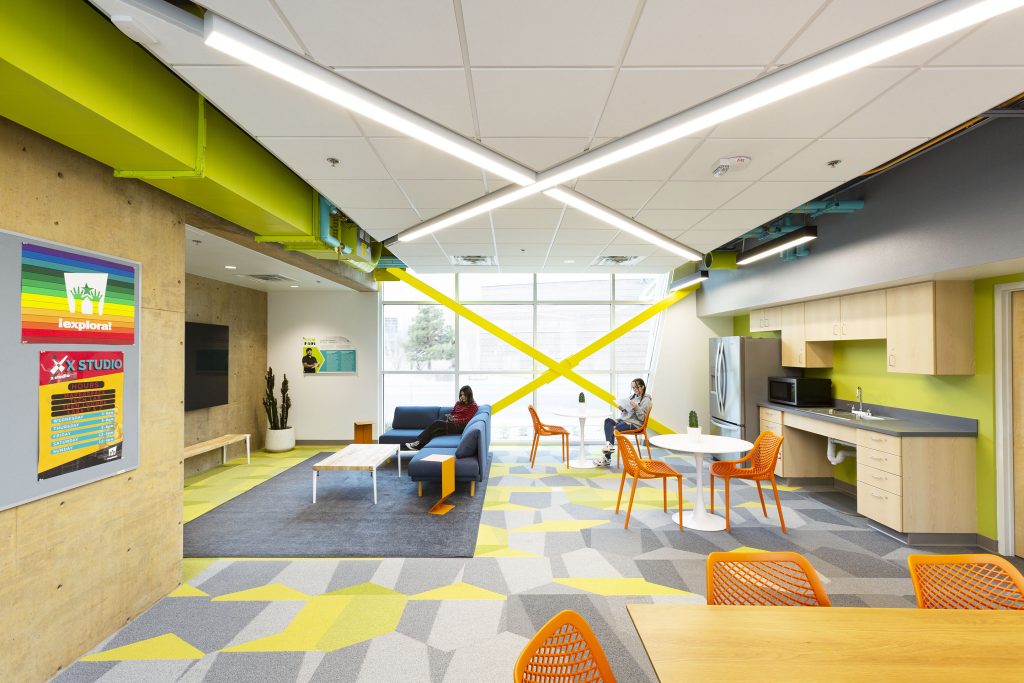Architecture that makes us healthier
By: Laura Anderson, AIA and Donna Marion, AIA
What if the buildings and communities we inhabit allowed us to live our best and healthiest lives? Can a school eliminate disease or a civic plaza nourish humanity?
The pandemic made clear just how much the quality of our indoor spaces impacts our health and well-being. Research has found that our environment has the largest impact on our health and that we spend on average 90% of our time indoors. Valuing wellness guides our design decisions by prioritizing the effects of the built environment on our physical, mental, and social wellbeing.
How did we get here?
For centuries and across cultures, the practice of designing the built environment has recognized the effect architecture has on the psychological, cultural, and sociological state of its occupants. Indigenous communities have long incorporated design strategies such as passive solar energy, daylighting, natural ventilation, and sustainable materials. Taos Pueblo has structures dating back over a thousand years, still continually occupied to this day, that use many of these strategies. Adobe walls provide a thermal mass that regulates the interior temperature and window placement provides natural ventilation.
With the advent of new technologies, health priorities within certain Western cultures shifted. The Industrial Revolution brought with it a number of negative impacts on human health, such as sick building syndrome, processed food, and detachment from nature. By turning to research and evidence-based design, we can design in ways that resonate with ancient wisdom and are well supported by science.

Why WELL, and Why Now?
The abundance of recent research into the effects of the built environment on its occupant’s wellbeing is evolving the architectural design process. This research informs our decisions and empowers us to create evidence-based designs that optimize health.
A comprehensive set of evidence-based design standards for occupant well-being design is the WELL Building Standard. The WELL Building Standard is a third-party sustainability certification program that recognizes buildings that are designed, constructed, and operated for occupant health and well-being. It is the most comprehensive and rigorous wellness certification program available today.
WELL buildings are designed to support occupants in six key areas: air, water, nourishment, light, movement, and thermal comfort. They also incorporate features that promote mental and social well-being, such as access to nature, quiet spaces, and opportunities for social interaction.
Third-party certification systems such as WELL provide a degree of accountability and consistency in how design decisions are evaluated. They are also an important piece in helping drive larger forces at work such as building codes and the market for sustainable material options – all part of a cultural shift towards holistic sustainable design.

Better Design for a Better World
A society that values wellness in design empowers architects to make design decisions in the best interests of occupant well-being. This means considering a broad spectrum of needs, including different abilities, cultures, and backgrounds.
Designing for wellness benefits all by creating spaces that are healthier, more productive, and more enjoyable. WELL buildings have been shown to reduce absenteeism, improve employee productivity, and increase occupant satisfaction.
Prioritizing wellness in design is especially important for programs that serve vulnerable members of our community such as hospitals, memory care facilities, and schools. In the Alamogordo Middle School project, currently in design, our team has incorporated key design elements that specifically support well-being for the students and staff. These include providing abundant natural light, views to nature, and acoustics that support learning, all important aspects of a healthy and safe learning environment.
Designing for wellbeing extends even further to the humane design for zoological facilities. Animals and their caretaker’s wellness was at the forefront of the designs for the new Australia exhibit at the ABQ BioPark Zoo. Studio SW utilized evidenced based best practices to create spaces where the animals could thrive as if they were in their natural ecosystem while keepers of the animals could safely and harmoniously provide care to the animals with minimal disruption to them. The wellbeing of the culture being represented, and community was also a key element to the design of the new exhibit. Seeking understanding and providing acknowledgment for Australia’s First Nation People and the land we are building on has provided growth of mind and will be shared with all future visitors to the exhibit.

In conclusion…
Designing for wellness means creating buildings and communities that nourish humanity. By prioritizing the health and well-being of occupants, architects can create spaces that are healthier, more productive, and more enjoyable for everyone.
At Studio Southwest, we envision a world where every living being can live their best, healthiest life. We believe that designing for occupant well-being is essential to creating a more sustainable and equitable future.
Sources
- 20th Century Death — Information is Beautiful
- The Living Future: Materials Redlist
- Healthy Spaces: The Rise of Wellness Design in 2022 | ArchDaily
- 8 Ways Architects Are Championing Health and Wellness Through Design (architizer.com)
- Building Health: The Link Between Architecture and Well-Being – (christiesrealestate.com)
- Why WELL | IWBI (wellcertified.com)
- Tracking_the_Market_Performance_of_Companies_That-2.pdf (acoem.org)
- Future of Work Reinvented | GartnerTaos Pueblo
About the authors

LAURA ANDERSON, AIA, NCARB, ICC
Laura is a professional architect with 20+ years of experience that covers a broad range of design from sustainable urban planning to specialized medical buildings. This experience includes recent projects with the City of Albuquerque and Albuquerque BioPark.
 DONNA MARION, AIA, LEED AP BD+C
DONNA MARION, AIA, LEED AP BD+C
Donna sees architecture as the balance of tension between technical needs and design possibilities; one that has the unique ability to benefit the common good. She is a LEED Accredited Professional and is leading Studio SW’s in-house sustainable design initiatives from their Santa Fe office.



